9 Days 8 Nights
Daily Tour
50 people
___
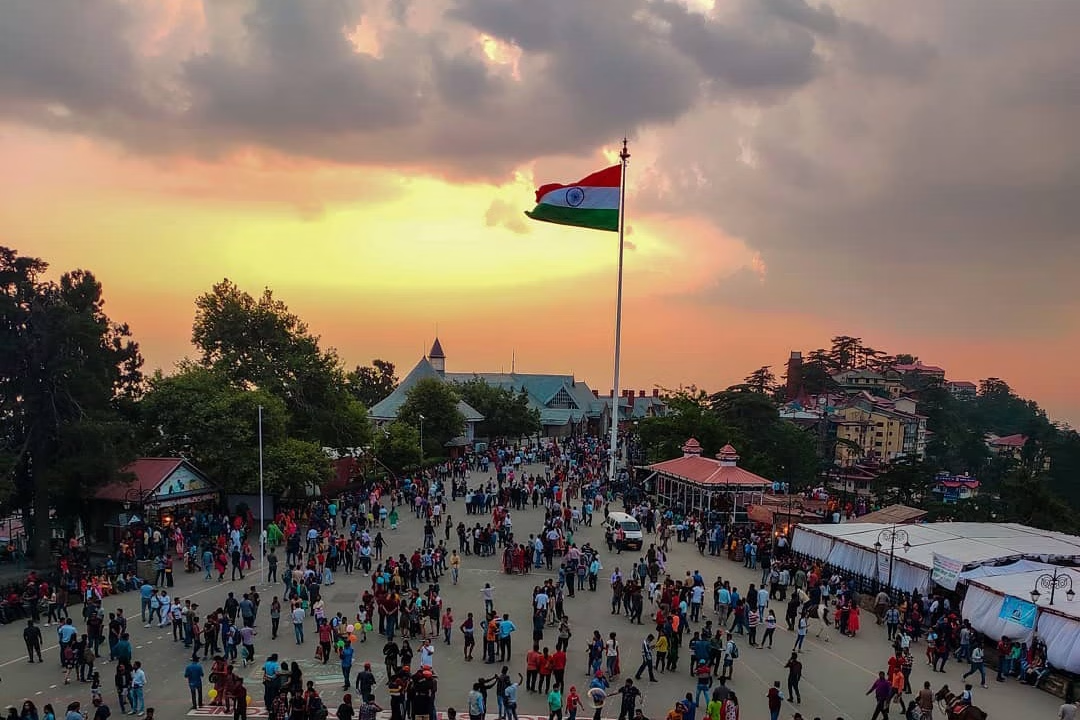
Dist: 341 km | Time: 7 to 9 hrs | Altitude: 300 m to 2276 m
You will start your adventure from New Delhi in a cab or a Volvo bus late at night. You will reach Shimla the following day after travelling by road for 7 to 9 hours. The journey will take you via Chandigarh, Kalka, and Solan.
Meals: NA
Night: Overnight Journey by Bus/cab
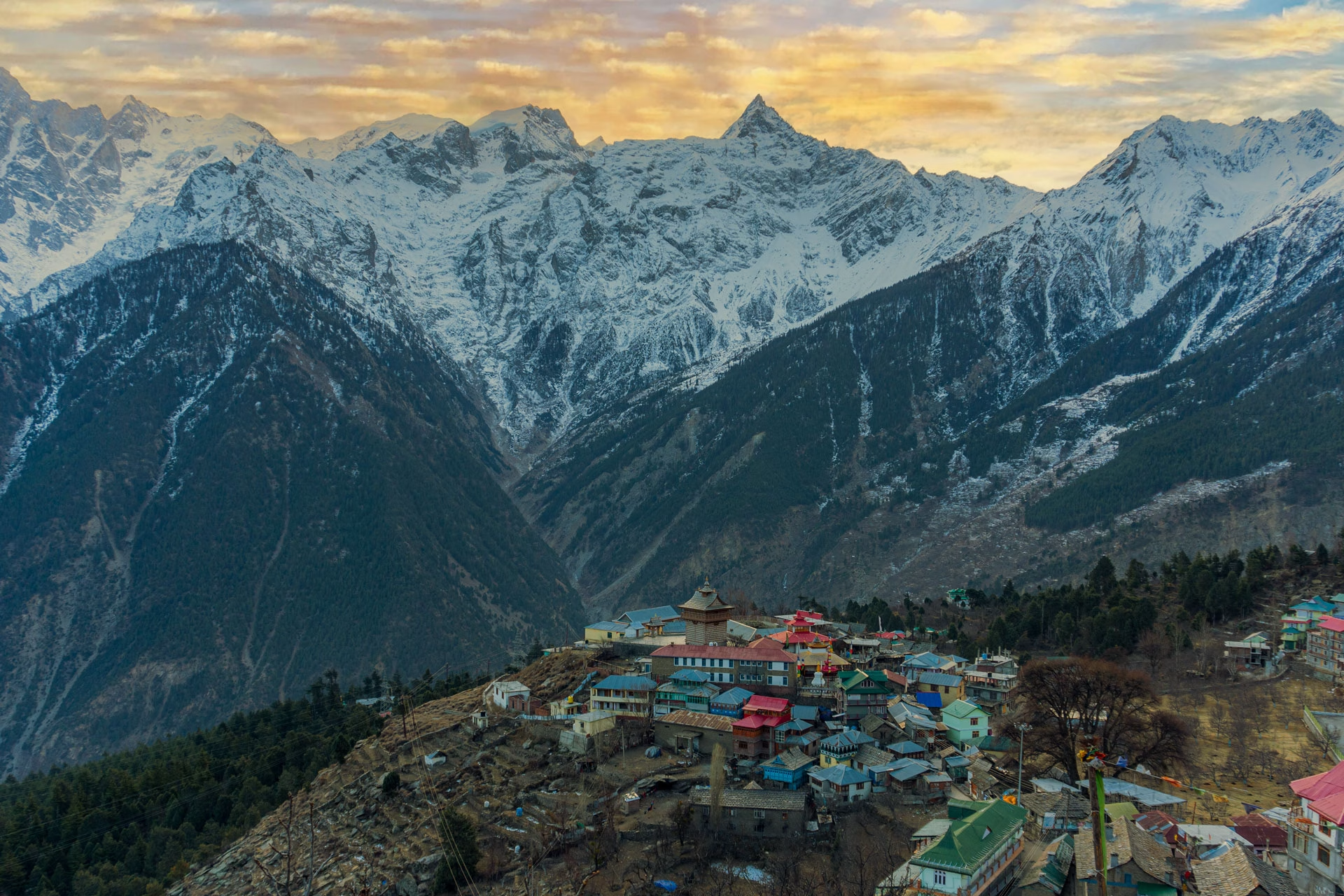
Dist: 241 km | Time: 7 to 8 hrs | Altitude: 2276 m to 2960 m
After reaching Shimla, you will drive towards Kalpa, a village known for its apple orchards and breathtaking Kinner Kailash Mountain Range views. If you are a foreign national, you will get your inner line permit in Kalpa.
Meals: Dinner
Night: Stay at the Hotel in Kalpa
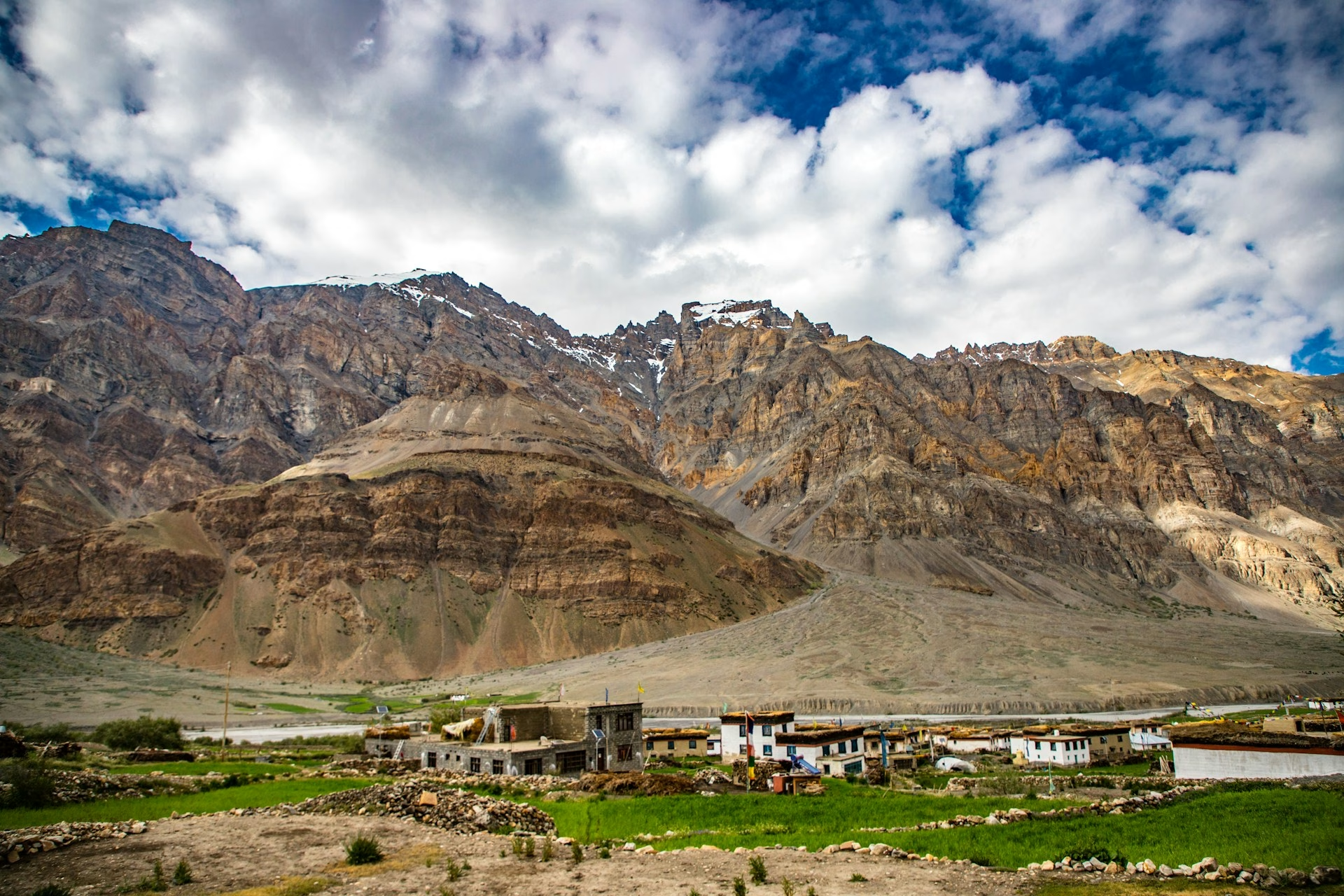
Dist: 148 km | Time: 6 to 7 hrs | Altitude: 2960 m to 3800 m
Today, after breakfast, you will depart for Tabo/Kaza. On the way, you will visit Khab (where the Sutlej and Spiti rivers meet), Nako Lake (surrounded by willow and poplar trees) and the Gue Monastery (home to a 600-year-old mummy).
Meals: Breakfast and Dinner
Night: Stay at Homestay in Tabo/Kaza
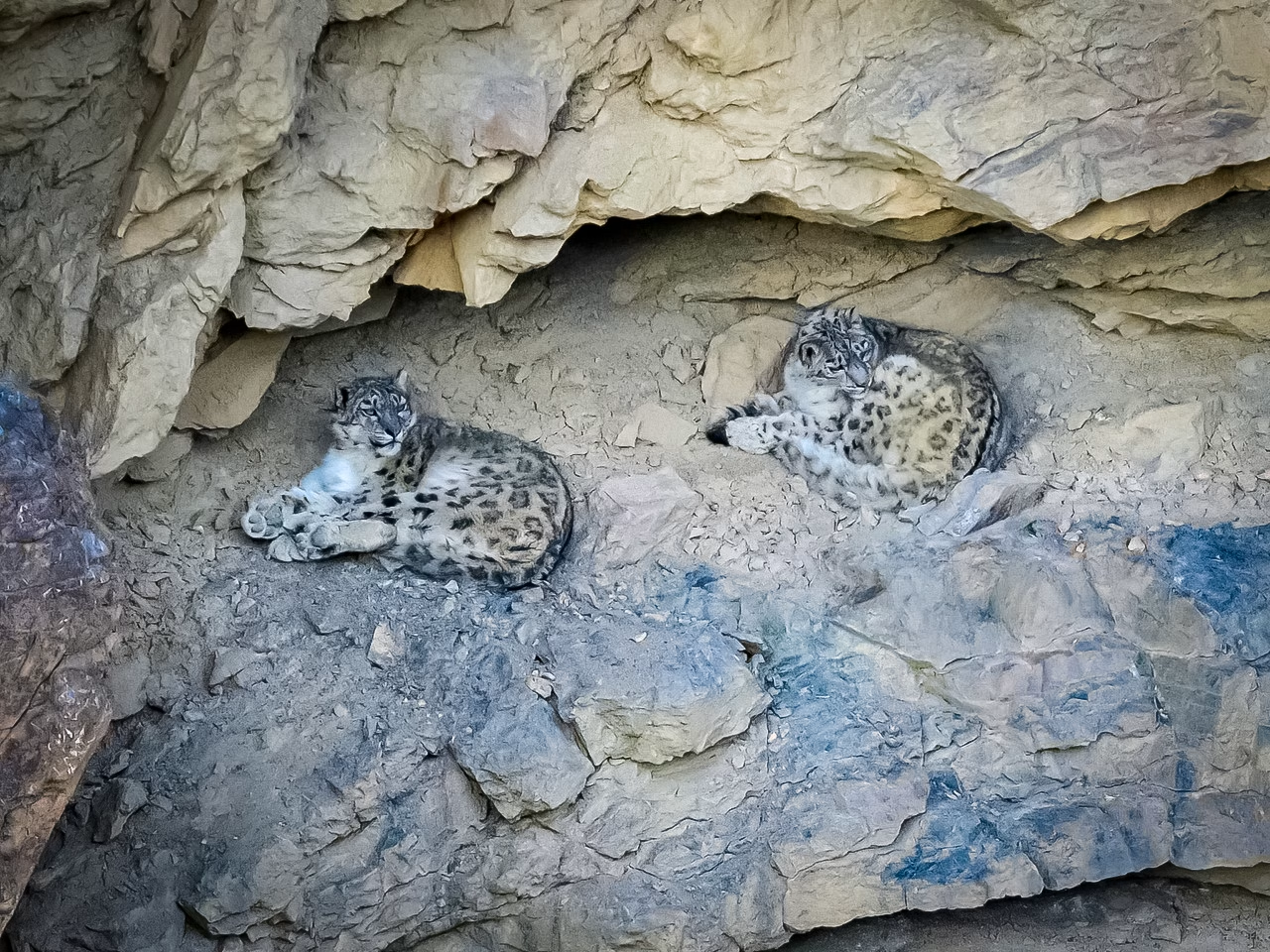
Time: After breakfast till evening
For five days, you will follow a routine where you will go for a Snow leopard sighting with experts and guides. You will be supplied with a packed lunch on the way if Snow Leopard sightings are there. You will return to the hotel/homestay in the evening to relax and prepare for the next day.
Meals: Breakfast, Lunch (packed) and Dinner
Night: Stay at Homestay in Kaza/Tabo
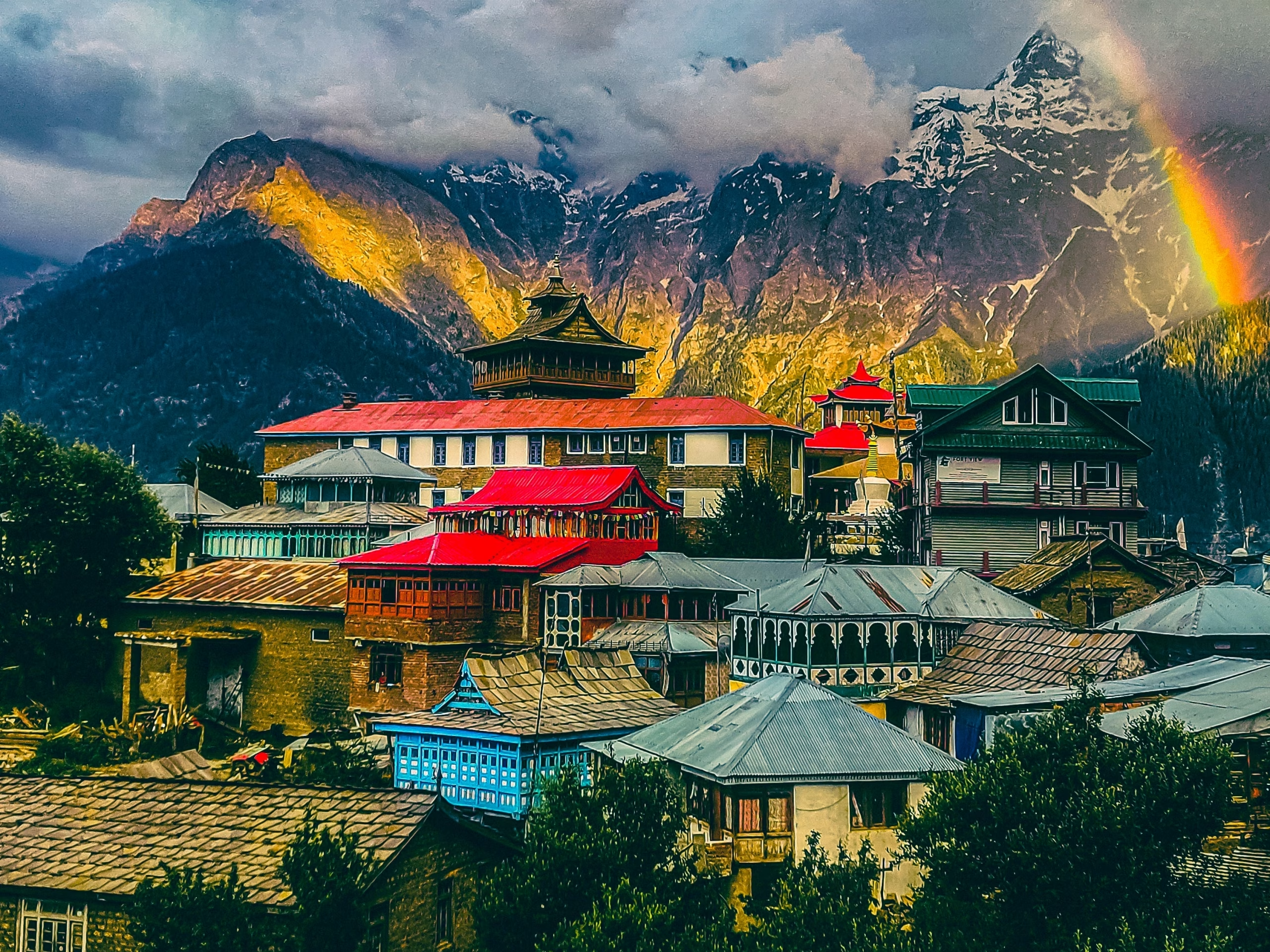
Dist: 171 Kms | Time: 6 to 7 hrs | Altitude: 3280m to 2960 m
After breakfast, you will drive towards Kalpa via Chango, Nako, Khab, Pooh, and Spello. Upon arrival, you will check in to the hotel/homestay at Kalpa. You can walk around the town in the evening and explore the local markets.
Meals: Breakfast and Dinner
Night: Stay at Hotel/Homestay in Kalpa
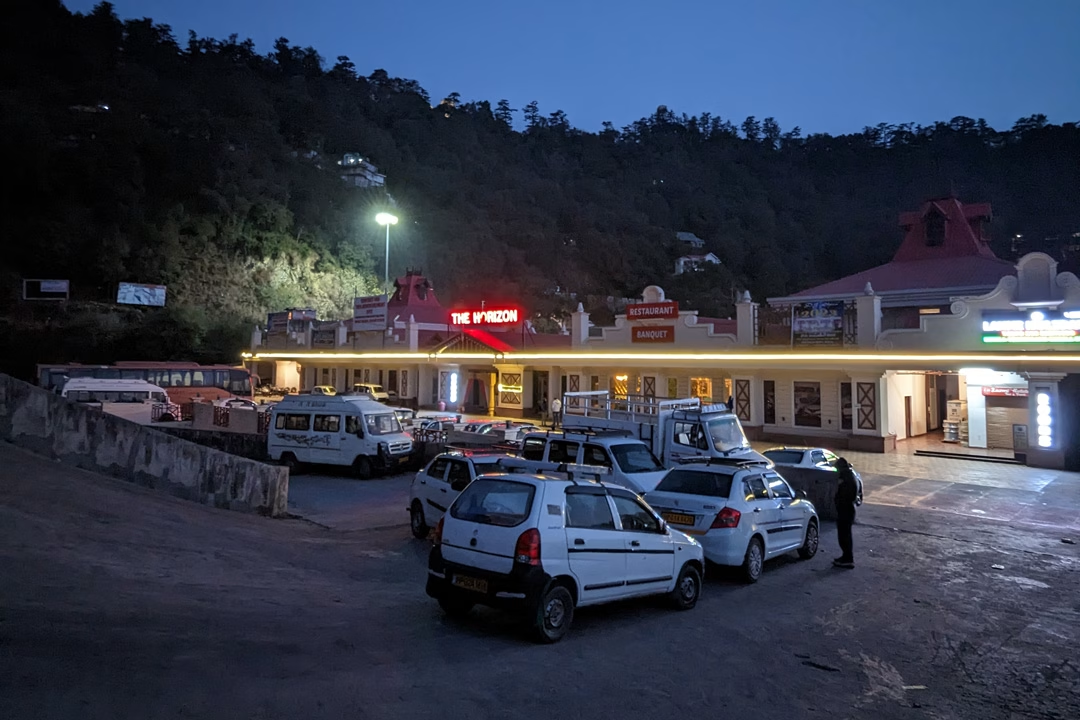
Dist: 241 km | Time: 7 to 8 hrs | Altitude: 2960 m to 2276 m
Wake up to views of Kinnaur Valley, nestled at the banks of the Sutlej River. After breakfast, you will drive towards Shimla via Karcham, Rampur, Narkanda, and Theog. In the evening, after reaching Shimla, you will depart for Delhi.
Meals: Breakfast
Night: Overnight Journey by Volvo Bus/Cab

Dist: 341 km | Time: 7 to 9 hrs | Altitude: 2276 m to 300 m
After an overnight journey from Shimla, you will arrive in Delhi early in the morning, marking the end of your Snow Leopard Expedition. You can reflect on your trip's incredible experiences and sightings as you head home or continue your journey from Delhi.
Meals: NA
Night: NA
| Clothing | Thermals and Base Layers Fleece Jacket or Sweater. Down Jacket Warm Trousers Warm Hat Balaclava or Neck Gaiter Gloves Insulated Waterproof Shoes |
| Gears and Equipment | Daypack Sunglasses Headlamp Camera with Extra Batteries Power Bank |
| Documents | Identity Proof Inner Line Permit |
We understand that plans can change, but the booking amount is non-refundable due to the costs we incur in preparing for your tour or activity. If you wish to reschedule for a different date, we'll adjust it to the same package, providing you with the necessary flexibility. If you have paid the total amount but cancelled the package. You will be provided with a refund as mentioned below:
Tours or activities might be cancelled due to unexpected circumstances, such as storms, heavy rainfall, sudden closures of specific areas, government restrictions, or anything beyond our control. In such a scenario, we will provide an alternate tour or activity. However, no refunds will be provided.
The snow leopard (Panthera uncia) is a top predator of the Indian Himalayas, also known as the “ghost of the mountains”. Its occurrence is regarded as an indicator of ecological health. The Greater and Trans-Himalayan ranges constitute an essential habitat for snow leopards towards the southern limit of their global distributional range. The snow leopard habitat in the Indian Himalayas is not limited to protected areas (PAs) but overlaps considerably with human-populated areas. These areas are also home to local communities whose cultures, traditions, and livelihoods are deeply linked to these landscapes. Snow Leopard (Panthera uncia) is the State animal of Himachal Pradesh. It is a flagship species for the conservation of the high Himalayas. Still, its secretive behaviour, camouflage, and adaptation to the cold and rugged mountain habitat capture the public imagination, making it one of the most charismatic species in the world. The snow leopard is also the State animal of Himachal Pradesh, and its habitat covers most of the districts of Lahaul-Spiti and Kinnaur. The upper regions of Kullu, Shimla, Chamba, and Kangra include their potential habitat, which extends into the. Most of these areas have remote and challenging terrain for the Snow Leopard Expedition Spiti. All this makes it difficult for snow leopards to study in Himachal Pradesh and across their Indian range. Nearly half of the geographic area of Himachal Pradesh is located within the high-elevation Himalayan and trans-Himalayan regions, which are the preferred habitats of the snow leopard. This region is rich with unique animal and plant species that are found only in the high mountain regions of the Himalayas and parts of Central Asia, such as the musk deer, brown bear, goral, monal, and cheer pheasant, and snow leopard. The snow leopard faces many threats throughout its distribution range. It is threatened by large-scale developmental projects such as mining and extensive infrastructure; rising livestock populations that can out-compete the wild herbivore prey of the snow leopard; increasing conflict with the herding community, leading to their persecution; and an increase in poaching for snow leopard body parts.
Globally, the snow leopard is found across the high mountains of twelve South and Central Asian countries. India has the third-largest share of the snow leopard distribution range. The State of Himachal Pradesh has played a pioneering role in conserving the snow leopard. Managing the 4000 sq km Upper Spiti Landscape was the first dedicated effort under Project Snow Leopard. It is the first among a handful of efforts to conserve a large carnivore species outside the protected area network. The State’s conservation efforts acknowledge that the wildlife in the high-elevation region is not restricted to protected areas but spreads across the entire landscape.
Himachal Pradesh’s snow leopard landscape is divided into valleys by large rivers like the Sutlej, Chenab, Beas, and Parvathi. Their tributaries include Baspa, Kugti, Ravi, Spiti, and others. Most watershed areas open into these main rivers. Large parts of this landscape are difficult to access, given the breaks in the landscape caused by the numerous rivers and streams. The snow leopard inhabits landscapes of varied geology, starkly different climatic regimes, diverse vegetation, and community structures. Because snow leopards are an elusive species in low densities, studies generally target smaller areas with relatively high densities.
The potential snow leopard habitat in Himachal Pradesh is stratified into 3 regions based on snow leopard occupancy – high (>0.75 occupancy), low (<0.75 occupancy) and the previously unsampled unknown stratum.
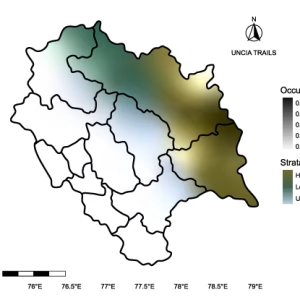
Prey density has a positive relationship with snow leopard density. Sites with a high prey population, such as Tabo and Spiti, are shown to have high snow leopard densities. On the other hand, Bharmour and Chandra, who reported low prey densities, were shown to have low snow leopard densities.
The Baspa Valley, a region of immense natural beauty, needs conservation efforts. It covers parts of the Rakcham-Chitkul Wildlife Sanctuary and its adjacent areas, notably the Rupin Pass region towards Jhaka and Jiskun. The valley’s lower reaches are home to oak and pine forests, Indian birch, and diverse species of rhododendrons. The Baspa region is a prime spot for Snow leopard sightings, stretching from Shong village to the Nagasti area beyond Chitkul, within the Rakcham-Chitkul Wildlife Sanctuary. Both sides of the Baspa River are known for Snow Leopard sightings, extending from Sangla Kanda towards the Udug Naal area beyond Rupin Pass and before Jakha-Jiscoon village. The region is also home to a diverse range of wildlife, including black bear, brown bear, Himalayan weasel, mountain weasel, leopard cat, jackal, stone marten, yellow-throated marten, monal, koklass pheasant, snowcock, snow partridge, musk deer, and blue sheep.
The Bhaga region falls within the Lahaul region of the Lahaul-Spiti district. This region falls under the Trans-Himalayan eco-region and experiences harsh winters. Most of the precipitation is mainly in the form of snowfall. The temperature ranges from 300C °C in summer to -350 °C in winter. The area is primarily considered a dry alpine region dominated by graminoids, sedges and a few shrubs. Snow leopard spotting areas in this region include the village of Darcha and the surrounding valleys covered within the Kugti Wildlife Sanctuary. The sampling area included the region NW from Darcha towards Shinko la, SE from Darcha towards Yoche, and NE from Darcha towards Zingzing/BarBaralacha La. Other animal species in this region include mountain weasel, red fox, stone marten, chukar partridge, snowcock, and ibex.
The regions between Batal and Tokpo Yongma (including Chandratal) and large parts of the left bank have never been surveyed for snow leopard spottings due to the harsh conditions and lack of access due to unseasonal heavy snowfall. The Chandra region falls within the Lahaul-Spiti district, and this region is a basin drained by the Chandra River, a sub-basin of the larger Chenab River. In the Chandra region, most of the snow leopard sightings are recorded on both banks of the Chandra River from Khoksar to Batal and then northwards into the Chandertal region till Tokpo Yongma (which eventually leads to Baralacha la), covering areas within the Chandertal Wildlife Sanctuary. Other animals detected in this region are brown bears, mountain weasels, stone martens, marmots, snowcock, chukar partridge and ibex.
Hangrang Valley is the second-largest valley in the Kinnaur district in Himachal Pradesh. This valley borders the area of Spiti in the upper Kinnaur region. It is very close to the Tibetan border on the north and eastern sides of Himachal Pradesh. This area experiences a harsh winter, and most precipitation is mainly snowfall. The temperature ranges from 250C in summer to -350C in winter. The area is primarily considered a dry Alpine area. The Snow Leopard in this region can be spotted in Hangrang Valley, extending from the Khab bridge to Hango village along with its adjacent areas, including the Upper Sutlej Valley and the Ropa Valley. Other species in this region include brown bears, stone marten, yellow-throated marten, jungle cats, leopard cats, red foxes, snowcock, chukar partridge and ibex.
This area consists of high mountain ridges, some upwards of 5,800 m, and is divided into three gorges – Tirthan, Sainj and Jiwa Nala – based on the streams that flow through each. Large parts of this region consist of moist temperate oak and conifer forests, along with high-altitude birch and fir interspaced with sub-alpine pastures (Baviskar, 2003). The Snow Leopards are spotted in this region, which is split between three valleys, Tirthan and Sainj (within the Great Himalayan National Park) and Parvati Valley (within Kheerganga National Park). However, they need to be higher in number in this region. Other species that can be detected in the same area are brown bear, black bear, common Leopard, Himalayan weasel, mountain weasel, leopard cat, stone marten, yellow-throated marten, vole, red fox, cheer pheasant, koklass pheasant, chukar partridge, goral, and musk deer and blue sheep.
This area is situated in the catchment of the Pin River within the Pir Panjal range of the Himalayas. Overall, the terrain is rugged, with most regions inclining 30 and 60 degrees. The areas of this region where Snow leopards can be detected are Ensa Nallah and its surrounding region (around and beyond Mudh village), around Sangnam village and the core region of the Pin Valley National Park roughly west of Sangam village, including the Geychang-Thango area and their connected side valleys. Other animals in this region are stone marten, red fox, chukar partridge, and ibex.
The Spiti landscape in the Indian trans-Himalayas is a high altitude (3500-6700 m) region covering an area of about 7,600 km2. The temperature ranges from -40°C in peak winter to 30°C in summer. Vegetation is broadly classified as ‘dry alpine steppe’ (Champion & Seth 1968). You can spot Snow leopards on the bank of the Spiti River from around the Lossar village area downstream till Demul, covering parts of the Kibber Wildlife Sanctuary. Other animals in this region are mountain weasel, stone marten, red fox, snowcock, wolly hare, snowcock, chukar partridge and blue sheep.
This region also falls within the Indian Trans-Himalayas but with slightly lower altitudes than the Spiti site. The temperatures range from summer highs of 30°C to winter lows of -30 °C. The vegetation in the region is classified as “dry alpine steppe” (Champion and Seth 1968). This region’s Snow Leopard Spotting areas predominantly overlap with this site, which covers the Spiti rivers’ right and left bank areas between the Schilling and Sumra villages. Other animals that can be detected are mountain weasel, stone marten, red fox, snowcock, wolly hare, snowcock, chukar partridge and blue sheep.
They possess unparalleled knowledge of the terrain, the weather, the best time, and the spotting locations in their area. Their assistance with sanctuary/national park permits, logistics, and safety will give you the confidence to focus on your photography.
Snow leopards can be easily spotted if snow is present because of their grey hair texture, which provides more contrast. Moreover, their tracks are easily visible in the snow, which makes tracking easier.
Remember, the thrill of capturing a snow leopard in its wild habitat is worth the wait. Your patience and diligence will be rewarded with stunning photographs. Snow leopards are masters at camouflaging themselves in cold, deserted mountains. They are also shy and stay away from humans, so they can go unnoticed for days or weeks. So, you should be patient and prepared to wait hours in the cold for any sign of their movement. This determination will lead to the most rewarding shots.
Snow leopards can hunt all the animals near their location, but most often, they hunt the Asiatic Ibex, Blue Sheep, and Argali. If you spot these animals, the chances of spotting a snow leopard also increase. A snow leopard might be ambushing these prey from a high cliff or the ledges of the rocky mountains.
Snow leopards have unusual and captivating habits that can help you comprehend and predict their motions. You can also refer to online aids like the National Geographic channel and the Snow Leopard Trust. You can also refer to the books Snow Leopard: Stories From Roof of the World and Snow Leopard, The: Penguin Classics. You can also talk to other photographers on social media who have already photographed these wild cats or consider collecting information about Snow Leopard Expedition Spiti
Snow leopards are usually active at sunrise and sunset when the light is low, and the colours are dim. To capture this wildcat, you need a zoom lens with a larger aperture, high ISO, and fast Shutter speed. You also need a rigid, good-quality tripod to stabilise your camera and lower camera shake. With the right equipment, you’ll be fully prepared to capture the beauty and power of the grey ghost in the wild.
Snow leopards are elegant and practical hunters that can jump up to six times their body length. Capturing a snow leopard amid a chase is a dream for every photographer. The adrenaline rush of these moments is unparalleled. You must use continuous shooting mode and a fast shutter speed to photograph these spectacular moments. Stay alert, as these events can unfold in the blink of an eye.
The best time to spot and photograph these wild cats is from January to early March, when they are most active. January to March is also the mating season when they mate and make pairs. During these times, you can witness and capture the intimate and playful interactions among these grey ghosts of the mountains.
The Forest Department of Himachal Pradesh, with the help of NFC (Nature Conservation Foundation), used camera trapping to track down the snow leopards in Spiti Valley. They counted around 75 Snow leopards in the valley of a 26000 sq km habitat area in the Himalayan Mountain ranges.
Notably, the Kibber Plateau, slopes between Tashigang, Kee, and Gete, the Shilla Nalla area, the plateau around Langza, Chicham, Hikkim, Komic, and the slopes around Demul, Salung, Rama, and Lalung have been the hotspots for snow leopard sightings. The snow leopard population mapping was done using 80 camera traps in upper Kinnaur (Asrang-Lippa wildlife sanctuary), Pin Valley, Baspa Valley, Tabo, Tharot-Miyar, Bhaga, Chandra, and upper Spiti Valley of Himachal Pradesh.
The IUCN (International Union for Conservation of Nature ) is the apex body working in nature conservation and sustainable use of natural resources. It has placed Snow leopards in the vulnerable category in India. The Snow Leopards will likely become endangered unless the events threatening their survival improve. Vulnerability is primarily caused by habitat loss or defacement of the species’ home. The situation is the opposite in Kinnaur and the Spiti Valley of India, where the population of snow leopards is growing.
Recent technological advances have revolutionised the study of snow leopards. Researchers in Spiti have employed camera traps, GPS collars, and even drones to monitor and track these elusive predators. Camera traps have provided invaluable insights into snow leopard behaviour, capturing rare footage of hunting, mating, and cub-rearing activities. GPS collars, however, have allowed scientists to track their movements across vast and rugged landscapes, revealing their extensive home ranges and migration patterns.
Genetic Studies: Unveiling the Secrets of Snow Leopard Populations
Genetic studies have also played a pivotal role in understanding snow leopard populations in Spiti. Scientists have identified individual leopards and assessed their genetic diversity by analysing DNA samples collected from scat and hair. These studies have revealed that the snow leopard population in Spiti is not just unique but genetically distinct from those in other regions, highlighting the critical importance of preserving this unique gene pool. Furthermore, genetic analysis has helped identify potential threats that could impact these magnificent cats’ long-term survival.
One of Spiti’s most significant developments in snow leopard conservation is the emphasis on community-based conservation. Local communities, traditionally pastoralists, have been engaged in conservation efforts through initiatives like the Snow Leopard Conservancy and Nature Conservation Foundation. These programs, built on a foundation of collaboration and shared responsibility, focus on reducing human-wildlife conflict, promoting sustainable livestock practices, and providing alternative livelihoods to reduce dependence on livestock. The active involvement of local communities has not only enhanced conservation efforts but also fostered a sense of stewardship towards these magnificent animals.
Spiti has become a symbol of hope for preserving snow leopards. Thanks to its conservation efforts, the government and local nonprofit organisations have cooperated in projects to protect these elusive cats. They have established wildlife reserves, practised sustainable tourism methods, and raised local awareness about conserving this “ghost of the mountains.”
For any wildlife enthusiast, the ultimate dream is to glimpse a snow leopard in its natural habitat. With its unique landscape and conservation efforts, Spiti Valley provides an exclusive opportunity to see these elusive creatures. At Uncia Trails, we lead in-depth expeditions into the snow leopard’s habitat, increasing the chances of a sighting. By patiently observing and studying the mountainside, we can witness the snow leopard’s elusive movements and stunning beauty.
While the thrill of spotting a snow leopard is undeniable, it’s crucial to prioritise responsible tourism. The long-term survival of these magnificent creatures hinges on minimising habitat disturbances and respecting wildlife boundaries. Visitors can actively support the conservation efforts in Spiti Valley and contribute to the well-being of these beautiful animals by engaging in ethical tourism. At Uncia Trails, we take responsible tourism seriously and ensure that our practices align with these principles.
Spiti Valley is a shining example of the power of collective conservation efforts. Thanks to the collaborative work of local communities, nonprofit organisations, and the government, the snow leopard population in Spiti Valley has seen a ray of hope. With responsible tourism practices and continued commitment, we can assure the survival of these glorious creatures for generations to come. So, it’s time to pack your bags and embark on a journey to Spiti Valley. Witness the enigmatic snow leopard’s glory while contributing to its conservation. Your journey starts here.
Snow leopards (Panthera uncia) are elusive top predators native to the high mountains of South and Central Asia. Their secretive behaviour, excellent camouflage, and ability to thrive in rugged, cold environments contribute to their nickname, "ghost of the mountains.
The snow leopard's fur is whitish-grey, with black neck and head spots and more prominent rose-like markings on the back and tail. The belly is usually white with no markings. The coat of Snow leopards is thick, with hairs measuring 6 to 13 cm in length. All of these features allow the snow leopard to camouflage in the Himalayas.
Snow leopards are crepuscular animals, which means they are primarily active during the twilight period. They regularly patrol their area, which can be hundreds of square kilometres. They leave markings on the landscape by spraying urine against the rocks to mark their territory.
Snow leopards are endangered due to several threats, including:
Poaching: Snow leopards are simmered for their skin and used in traditional medicine.
Habitat loss: Large-scale development, such as mining, destroys snow leopards' habitats.
Climate change: Rising temperatures affect the snow leopard's alpine habitat, impacting prey and freshwater availability.
Retaliatory killings: Herders sometimes kill snow leopards in retribution for protecting their herds and livelihoods.
Loss of prey species: The snow leopard's natural prey, such as wild mountain goats and sheep, are declining in number.
Lack of awareness: Local communities and governments may need to know the snow leopard's status and threats.
The snow leopard expedition in Spiti Valley can cost between ₹70,000 and ₹1,40,000 per person, depending on the days and facilities the tour provides. For the best experience, book your Snow Leopard Expedition with Uncia Trails.
In Himachal, the Great Himalayan National Park is a protected area home to various wild animals, including Snow Leopards. In Ladakh, Hemis National Park is home to Snow Leopards. India is known for its high Himalayan mountain ranges, home to around 718 snow leopards.
Snow leopards are found in six Himalayan states in northern India. Ladakh has the highest population of Snow Leopards, followed by Uttarakhand, Himachal Pradesh, Arunachal Pradesh, Sikkim, and Jammu and Kashmir.
Snow leopards inhabit the Himalayan belt in North India, mainly in Ladakh, Himachal, and Uttarakhand. Various organisations like Uncia Trails provide Snow Leopard Expeditions, which are well crafted by professionals from the native areas who are knowledgeable about their habitat.
The IUCN (International Union for Conservation of Nature) lists snow leopards as “vulnerable,” which means they are threatened with global extinction. Humans are responsible for this vulnerability, as they continuously increase their activities in the regions home to these wild cats. Climate change is also one factor in their decline.
Although snow leopards are very good at camouflaging themselves, they mostly like to hide in broken terrains like ridges and ravines. Hiding at such places gives them good cover and a clear view to sneak up on their prey. They also make their dens in sheltered gaps in the rocky terrains. They live solo and only come together when it's time to mate.
The life expectancy of snow leopards is typically shorter because of the harsh conditions they are living in. The lifespan of a Snowleopard is between 18 to 22 years. They reach sexual adulthood at the age of 2 or 3 years. They have 1 to 5 cubs at a time. These cubs are born blind and weigh only 11 to 25 ounces.
Yes, snow leopards are stronger than cheetahs because cheetahs are built for speed, whereas snow leopards are built for strength, which they use to survive in very harsh conditions. Cheetahs usually use their speed instead of strength to hunt their prey, while Snow leopards must use both stability and speed and the ability to balance themselves on steep slopes with less oxygen to kill their prey.
You can book the Snow Leopard Expedition in Spiti with Uncia Trails. The name "Uncia" is derived from the scientific name of the snow leopard, Panthera uncia, reflecting their deep connection with these majestic animals. As a local trekking community specialising in Himalayan adventures, Uncia Trails provides a unique and authentic experience. Their local expertise and passion for the region ensure a well-planned and insightful expedition, offering the best chances to spot the elusive snow leopard while supporting conservation efforts.
The snow leopard is nick-named the “ghost of the mountains” because it is hard to spot even when it is very near. The colour pattern on its body makes it almost invisible to spot and trace.
Snow leopards (Panthera Uncia) are found in 12 countries in Central and South Asia, including China, India, Nepal, Bhutan, Pakistan, Afghanistan, Russia, Mongolia, Kazakhstan, Kyrgyzstan, Tajikistan, and Uzbekistan. China hosts the largest population. Spiti Valley in India is one of the prime locations where these elusive creatures can be spotted. Spiti's rugged and remote landscapes provide an ideal habitat for snow leopards.
Snow leopards are carnivores whose diet primarily consists of large prey such as blue sheep (bharal) and ibex. When larger prey is scarce, they also hunt smaller animals like marmots, hares, and birds. Snow leopards may prey on domestic livestock in some areas, leading to conflicts with local herders. They can adapt to the availability of prey in the region, which is one of the reasons they can persist in such extreme environments.
Generally, snow leopards avoid humans and human encounters. They are elusive and shy. There are no cases of snow leopard attacks on humans because of their solitary nature, which means they prefer to stay away from crowds and crowded areas. They only come closed when they have to feed on livestock or animals wandering in places where humans remain.
The snow leopard has dark grey or black spots known as rosettes. These spots are present on a background of whitish-tan-coloured fur. This texture helps the snow leopard to camouflage in the terrain.
Snow leopards are primarily nocturnal, meaning they are most active at night. They tend to hunt and move around during dawn, dusk, and night, which helps them avoid human activity and other potential threats. Their nocturnal behaviour also adapts to the cold mountainous regions they inhabit, where nighttime temperatures can be more favourable for hunting.
No, you cannot pet a snow leopard. Snow leopards are wild animals, not domesticated pets. They are solitary and elusive predators that live in remote mountainous regions. Attempting to approach or pet a snow leopard is dangerous and illegal, as they are a protected species. Additionally, snow leopards require specific habitats and diets that cannot be replicated in a domestic setting, making it impossible and unethical to keep them as pets.
Snow leopard density is positively related to prey density. Areas with high prey populations, such as Tabo and Spiti, tend to have higher snow leopard densities than regions with lower prey densities.
Notable regions for snow leopard sightings in Himachal Pradesh include Baspa Valley, Bhaga, Chandra, Hangrang Valley, Kullu, Pin Valley, Spiti, and Tabo.
Suppose you want to spot and photograph snow leopards. In that case, it is recommended to trust local guides, plan trips after a snowfall, be patient, follow their prey, study their behaviour, use appropriate camera equipment, and consider visiting during their mating season.
Visitors can contribute to snow leopard conservation by practising responsible tourism, minimising habitat disturbances, respecting wildlife boundaries, and supporting local conservation initiatives.
In Spiti Valley, prime spotting areas include the Kibber Plateau, Langza, Chicham, Hikkim, and Komic, as well as the slopes around Demul, Salung, Rama, and Lalung.
Future steps include continued support for local conservation programs, sustainable tourism practices, habitat protection, and addressing threats like poaching and habitat loss to secure the future of snow leopards in Spiti Valley.
Leave a review